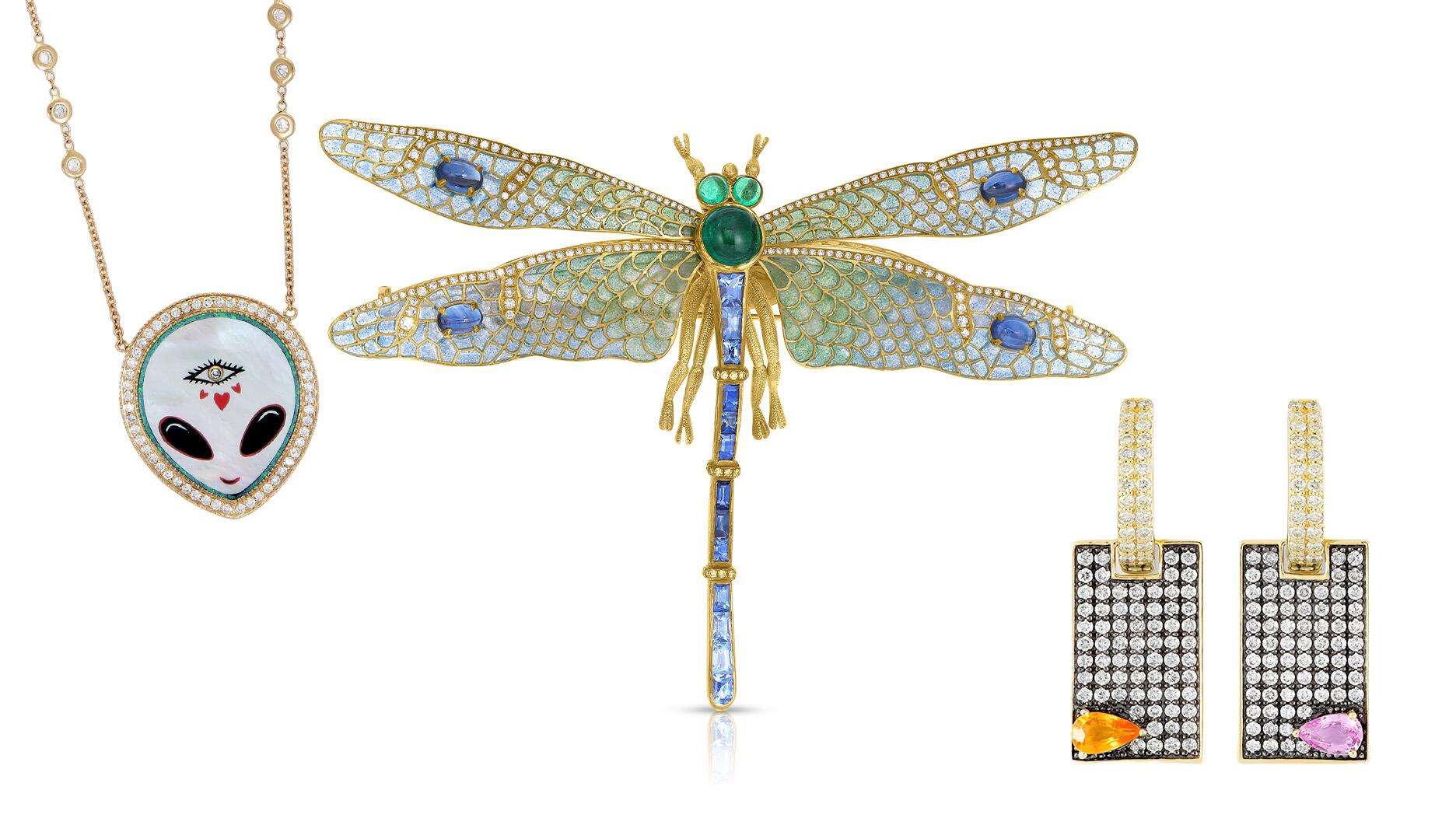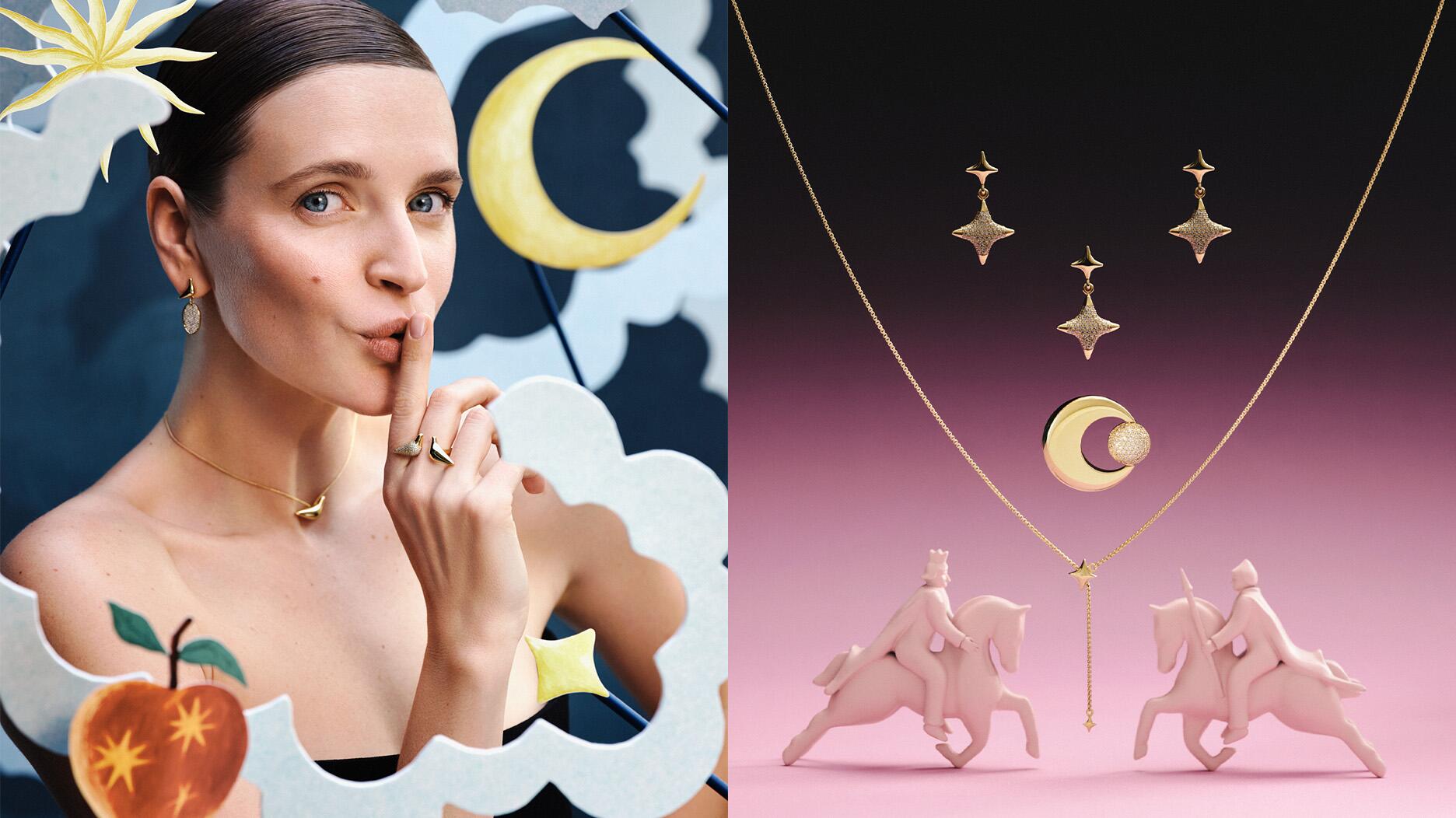Berta de Pablos-Barbier will replace Alexander Lacik at the start of January, two months earlier than expected.
4 Reasons Why People Buy Branded Goods
Branding plays an important part in consumer purchasing habits, and retailers today can’t afford to miss out by not carrying branded lines, retailer Jim Alperin writes.

The jewelry in your store might be as beautiful and as well made as the branded names, yet customers will walk past your store to shop for branded merchandise at a store down the street, sometimes paying more for a product no better than the one you carry. A solitaire is a solitaire, but put it into a powder blue-colored box and suddenly it has added value. Why?
1) Wearing branded merchandise sets us in a specific economic category, a certain rung on the socioeconomic ladder. It tells others where we are on the economic scale. There is a certain pecking order in society and wearing branded merchandise tells those with whom we come in contact that we are in a lower group, the same group or a higher socioeconomic group than they are, depending upon the prestige and price point of the items worn.
2) It allows us to feel as though we fit into society and belong to the group. Humans aren’t solitary animals any more than monkeys are. Wearing similar and familiar brands helps us to relate to others in the group and feel a part of something larger than ourselves.
3) There is, of course, the sense of pride of ownership. Everyone wants to own beautiful and well-made things, and branded merchandise tends to be of high quality. There is a sense of pride when you walk up to the three-pronged hood ornament that decorates your shiny Mercedes. Each time you shut the car door and hear that classic “thud” it gives you the sense that you have purchased a well-made machine. Every morning when you get up and slip that stainless steel and gold watch over your hand and hear it snap solidly onto your wrist, you take a moment just to appreciate its art.
4) Branding takes the thinking out of a purchase. When a man goes shopping for his wife and he knows she likes a certain brand, he doesn’t have to think any further than the brand name. Anything that has that particular name on it will
Let’s take a look at some brands. My favorite example is Rolex. Rolex unquestionably is a good product but they haven’t greatly changed their look in years. Many of you may not even know that Rolex makes a line of dress watches. They aren’t nearly as popular as their Oyster watch line, which is an immediately recognizable status symbol that tells others we can afford a high-end, luxury item. It also, of course, gives the wearer a sense of pride of ownership, which, while it shouldn’t be overlooked, consumers also can get from many other fine watch brands not so commercially known or recognized.
Pandora has been a phenomenon in recent years, running circles around its competition in the bead market. Pandora is an example of “fitting in” to the group as a brand. People all have a story to tell, and Pandora allows them to do so proudly on their arm. Their recognizable bracelets telegraph to others that they are loved by their families and are a part of something greater than themselves. A woman wearing Pandora can easily relate to and feel a kinship with another woman wearing a similar-yet-still-different Pandora bracelet.
If you aren’t a Pandora dealer but carry other beads, you may have experienced a customer coming in looking for a bead to add to their loved one’s bracelet, only to have them leave because the beads you carry aren’t from Pandora. The beads you carry might be just as good as or better than Pandora’s, yet it’s Pandora they will buy.
Purses, too, are the perfect example of branding, placing women in a position on the social ladder. Purses are large and have intrusive names or initials emblazoned across them, and they are put down on the counter right in front of you. “Take that!” the carrier seems to say as they plunk down 15 pounds of beige and brown vinyl with leather trim onto your countertop.
Young people today want to fit into society as much as any previous generation, but they may do so without the same branding as we’ve seen in the past.
The biggest brand today adorning the younger generation isn’t a purse, a car, clothing or jewelry … it’s tattoos. Humans will always want to adorn themselves and will always do something to tell others where on the socioeconomic ladder they fit. Young people are wearing permanent jewelry: ink. You don’t have to insure it or worry about losing it. It telegraphs to other young people that you are hip and a part of their generation. It says, “I’m cool and I belong,” not to my parents’ generation but to the new generation.
Branding is a part of our society and if you don’t have branded names in your store, you’re going to lose sales to the stores that do carry branded names.
Now, if you will excuse me, I’m going out and getting a tattoo!
Retailer Jim Alperin owns James Alperin Jewelers in Pepper Pike, Ohio. He can be reached at alpjewel@aol.com.
The Latest

Sotheby’s held its first two jewelry sales at the Breuer building last week, and they totaled nearly $44 million.

Winners will receive free registration and lodging for its fourth annual event in Detroit.

How Jewelers of America’s 20 Under 40 are leading to ensure a brighter future for the jewelry industry.

Here are six ideas for making more engaging content for Instagram Reels and TikTok, courtesy of Duvall O’Steen and Jen Cullen Williams.


The honorees include a notable jewelry brand, an industry veteran, and an independent retailer.

Carlos Jose Hernandez and Joshua Zuazo were sentenced to life without the possibility of parole in the 2024 murder of Hussein “Sam” Murray.

Roseco’s 704-page catalog showcases new lab-grown diamonds, findings, tools & more—available in print or interactive digital editions.

Yood will serve alongside Eduard Stefanescu, the sustainability manager for C.Hafner, a precious metals refiner in Germany.

The New Orleans jeweler is also hosting pop-up jewelry boutiques in New York City and Dallas.

Set in a Tiffany & Co. necklace, it sold for $4.2 million, the highest price and price per carat paid for a Paraíba tourmaline at auction.

The jeweler’s “Deep Freeze” display showcases its iconic jewelry designs frozen in a vintage icebox.

Take luxury gifting to new heights this holiday season with the jeweler’s showstopping 12-carat sphene ring.

This year's theme is “Unveiling the Depths of the Ocean.”

Starting Jan. 1, customers can request the service for opal, peridot, and demantoid garnet.

The 111-year-old retailer celebrated the opening of its new location in Salem, New Hampshire, which is its third store in the state.

The new catalog features its most popular chains as well as new styles.

The filmmaker’s personal F.P. Journe “FFC” prototype was the star of Phillips’ recent record-setting watch auction in New York.

The new location in the Design District pays homage to Miami’s Art Deco heritage and its connection to the ocean.

Inflations, tariffs, and politics—including the government shutdown—were among consumers’ top concerns last month.

“Longtime favorite” presenters, as well as first-time speakers, will lead talks and workshops at the annual event in Tucson next year.

Silas Smith of Meridian Metalworks won the challenge with his pendant that blends Australian and American landscapes.

The sale of the 31.68-carat, sunset-hued stone was part of Sotheby’s first series of events and auctions in Abu Dhabi.

Most customers who walk into your store this month have made up their minds. Your job is to validate their choice, Emmanuel Raheb writes.

MatrixGold 3.11, the newest version of the jewelry design program, offers more flexibility, precision, and creative control.

The pavilion will be part of the 2026 JA New York Spring show, scheduled for March 15 to 17.

Kadet, a 1994 National Jeweler Retailer Hall of Fame inductee, helped grow the family-owned retailer in the Chicago area and beyond.



























